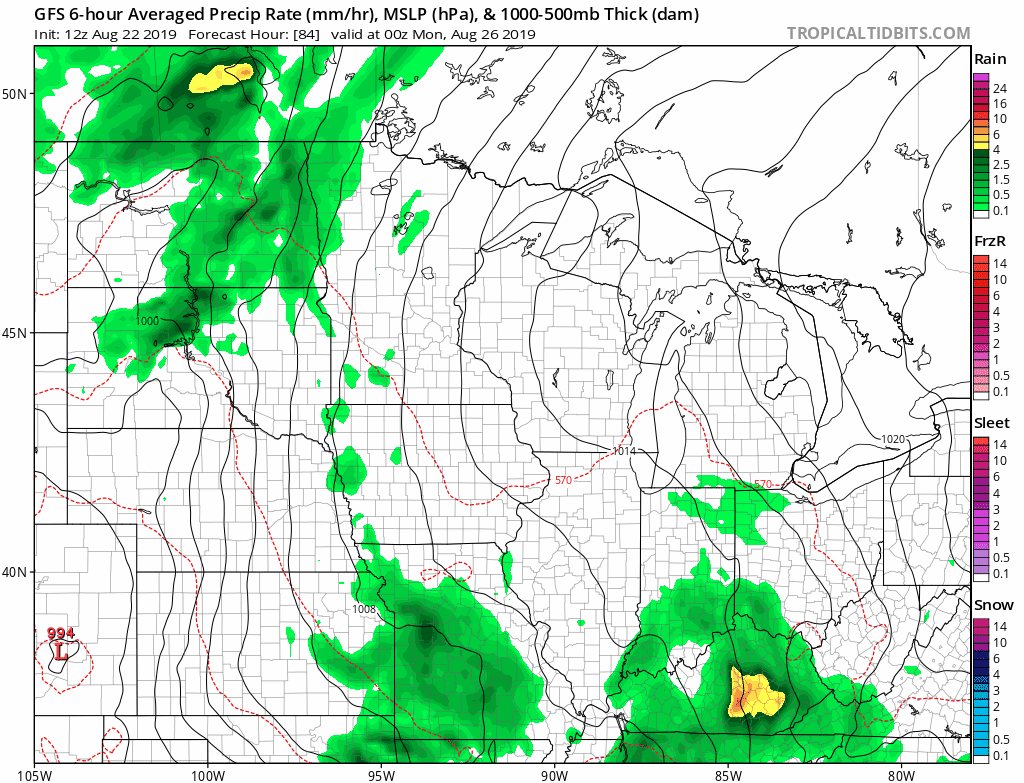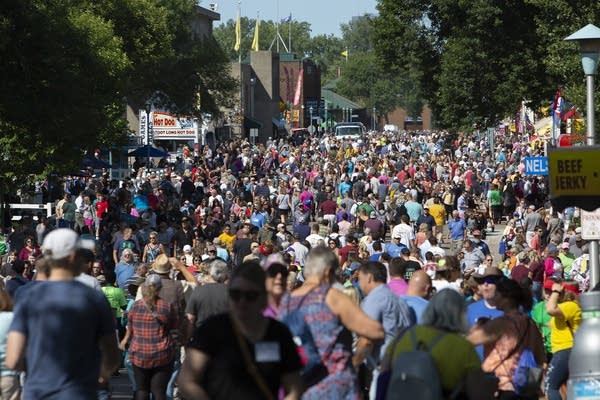Room temperature forecast; Initial Sanders climate plan analysis
Ideal temperatures for human comfort
Go Deeper.
Create an account or log in to save stories.
Like this?
Thanks for liking this story! We have added it to a list of your favorite stories.
Somebody set Minnesota’s climate-control system to early September.
Highs in the 60s north and 70s south rule our forecast until further notice. Dew points in the 50s indicate a very comfortable air mass — free air conditioning, good sleeping weather.

Next rain chance Sunday night and Monday
Our next real rain chance arrives in western Minnesota Sunday night, and spreads statewide by Monday. NOAA’s Global Forecast System model shows the progression of rain across Minnesota from Sunday evening through Monday.

State Fair weather
Did you know there has not been a 90-degree temperature at the Minnesota State Fair since 2013? Would you believe we had a record of six days of 90-degree that that year?
Turn Up Your Support
MPR News helps you turn down the noise and build shared understanding. Turn up your support for this public resource and keep trusted journalism accessible to all.

Here’s a great summary of historical State Fair weather from the Minnesota Department of Natural Resources Climate Working Group.
Although a wide variety of weather has greeted Fair-goers over the years, it's the late-summer heat waves that are perhaps most memorable. By far the highest temperature in the Fair's history was 104 degrees F, on September 10, 1931. In fact, the second-highest temperature ever recorded during the Fair was 99 F, notched the same year but two days earlier. Not surprisingly, the 1931 Fair is the current record-holder for high temperatures, averaging 92.6 F, which is 2.7 F higher than the runner-up (1922). It is worth noting that the 1931 Fair ran eight days, from September 5-12, whereas the Fair currently runs 12 days, making it less likely to sustain such high temperatures over that longer period. On the other hand, 1931's record is even more impressive considering that the entire Fair took place during September, when extremes of heat become increasing rare.
Recent steamy State Fair conditions were experienced during 2013, which was the third warmest on record and also had a record six days with 90-degree high temperatures. 2012 was quite warm as well, with an average daily maximum temperature of 87.1 degrees. The last five State Fairs, however (2014 through 2018), generally have lacked hot weather, with no 90-degree high temperatures recorded in any of those years.

Bernie Sanders climate plan
There are many newsworthy items in the climate plan released by Senator Bernie Sanders Thursday. And there is already plenty of initial reaction. As a climate journalist I don’t advocate a specific candidate or policy, but I do assess and analyze how various proposals might impact the atmosphere and economy.
Here are some very preliminary thoughts and questions about the Sanders plan.
The goal of making the U.S. carbon-free by 2050 is ambitions. But some might say it’s unattainable. If approached it would move the world closer to IPCC goals, if earth’s other major industrialized countries act in similar fashion. A significant move in that direction is necessary for lowering greenhouse gas emissions.
The goal of 100 percent renewable energy and electric transportation by 2030 is also highly ambitious. Again, many analysts will say the 100% number is unattainable. But technology is rapidly making renewables more efficient and cheaper. Minnesota moved to 25 percent renewable energy last year. That’s much faster than predicted even 10 years ago. Battery storage technology is progressing rapidly, and costs are falling. Most analysts agree there are major economic and job opportunities in the rapid development of this technology.
How many jobs will be created with a rapid push to cleaner energy and transportation?
How many jobs will be disrupted with an essential phase out of fossil fuels?
One factor that needs to be weighed is how much economic productivity will be lost to climate risk if changes are not made? In other words, what’s the cost of doing little or nothing about climate change? Some estimates say that could be as high as $34 trillion by the end of the century. That number may be conservative considering estimates of trillions in real estate at risk in Florida alone.
From an atmospheric perspective, there’s no doubt that a rapid lowering of greenhouse gas emissions is required soon to stave off the worst impacts of climate change.
Again these are some quick initial thoughts from my perspective working in the climate arena every week for more than a decade. A more complete analysis by economists and others of Senator Sanders and other climate plans is necessary.


